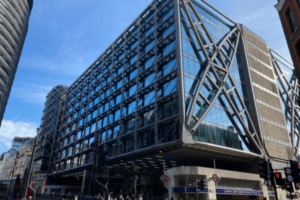Dating the precise collapse of Roman rule in London is hard. However, a lack of archaeological finds for the fifth century suggests that the Roman city was largely empty by about 450. The Anglo-Saxons developed a new port in the late seventh century, but that was upstream from the old settlement at what is now Aldwych.
It used to be thought that an imperial rescript (a set of answers to queries) of the Emperor Honorius dated to 410 was a reply to an appeal from the Britons for help, in which he told them they were on their own. This used to be taken as the point at which the empire collapsed in the province of Britannia. There is now doubt as to whether this was indeed a rescript and that whatever it was that it refers to Britain – it may have been concerned with Brettia in Italy. Nevertheless, the date of 410 is quite a good one for the demise of effective Roman administration.
The last Roman coins to appear in large numbers in the province are those of Honorius, and of his brother Arcadius who ruled in the East, struck in 402. This may well reflect the inability after this date of the western government based in Ravenna to pay for the garrisoning and administration of the province. It could also reflect a lack of soldiers to pay in the first place, and difficulties in transporting large amounts of coin. Roman rule, to judge from the evidence of coin finds, was becoming remote and ineffective.
There was a series of military revolts in Britain beginning in 407 which saw Marcellus, then Gratian and then Constantine III claim that they were imperial colleagues ie co-emperors with Honorius. Constantine took some of the remaining soldiers in the province, thus further reducing the garrison to defend the island, with him to try to secure Gaul and Spain as well. His success was such that in 409 Honorius felt it wise to officially recognise him as a co-ruler – something he had not done with the earlier usurpers. However, the following year, Constantine lost control of Britain. According to the historian Zosimus, the Britons under attack from barbarians from across the Rhine revolted against Roman rule in order to organise their own defence. They probably threw out much of Constantine’s administration at the same time. The Roman government – that of Constantine III based now in Arles – had become utterly ineffective in dealing with the immediate Barbarian threat, and yet still cost resources to maintain.
Britain had fallen out of the Roman orbit before the troubles of Honorius’s reign as earlier usurpers on the island had claimed to be co-emperors, and had carved out regimes outside imperial control. The pretender Magnus Maximus had done this in 383 and was able to maintain his regime for five years. Eugenius, a slightly later usurper, had ruled much of the western empire, including Britain from 392-394.
Both regimes had come to an end through intervention from the Emperor Theodosius. In 410 many no doubt expected Roman rule to return. The weakness of the western empire prevented that from ever happening. Roman London emptied, not to be occupied properly again until the time of Alfred the Great.
Related Blog Posts:
The Roman London Wall and why it was built
Leadenhall Market – the Heart of Roman London
–
Explore more of Roman London. Book tickets for Ian McDiarmid’s Roman London Walk now. Private tour also available here.


